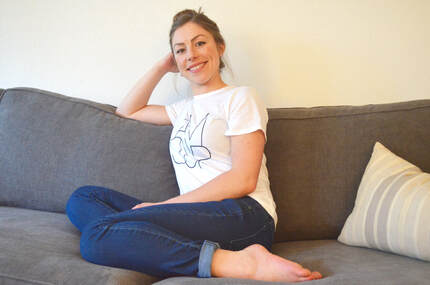 Sometimes our brains get overwhelmed by anxiety, anger, or sadness. This can be a very confusing experience for children. If we help them understand what is happening in their brain, they can find the power to make better choices in those situations. Such knowledge about the brain can be equally as powerful for parents, helping you understand how to respond when your child needs your help. Here are some things you can tell your child about their brain:
The brain is the body's boss. It has 100 billion cells that control everything you do, including breathing and digesting food, movements like walking and picking your nose, emotions like being happy or cranky, and processing sensory information like hearing and seeing. Without it, we wouldn't be able to do anything! It has 4 major parts that work together. The cerebrum helps us to reason, move, see, plan, speak, and hear. The cerebellum controls posture, balance, coordination and speech. The limbic system is deep inside and controls emotions, memories, and arousal (or stimulation). The brain stem connects to the spinal cord, controls the flow of messages between the brain and the body, and manages basic body functions like breathing, swallowing, heart rate, blood pressure, and whether you are awake or sleepy. We can think of the brain like a house with an upstairs and a downstairs (an idea from Dr Dan Siegel and Tina Payne Bryson’s book "The Whole Brain Child"). The thinkers, problem solvers, planners, and emotion regulators live upstairs. They help us stay calm and make good decisions. The feelers who want to keep you safe and make sure your needs are met live downstairs. They look out for danger, sound the alarm when they perceive it, and make sure you are ready to fight, run, or hide. The brain works best when the upstairs and the downstairs work together. Imagine there are stairs connecting upstairs and downstairs, busy with brain cells (also called neurons) carrying messages up and down to each other. When the two floors work together like this, it helps us make good choices, get along with others, calm ourselves down, and get ourselves out of tricky situations. Sometimes downstairs is a little too loud and busy and it hits the panic button by mistake in response to a small problem. The natural instinct is to protect ourself and respond with defensive action, triggering impulse reactions and meltdowns. In these situations, the stair case is crowded and the upstairs clear-thinkers can't send their messages through fast enough. The upstairs also happens to be under construction until the mid-twenties, so sometimes the brain doesn't have the man-power to suppress impulses as quickly as we want. But, regular mindfulness exercises can help that. The brain grows and changes every day, just like the length of our hair and size of our feet. The brain is not a muscle, but we can make it stronger and faster at what it does. Whenever a neuron sends or receives a message, connections called neural pathways are formed. When the same message is sent between the same neurons, this connection gets stronger and eventually becomes habit. This is why you always know how to tie your shoes or ride your bike once you have learned it. Even though all brains work in the same basic way, we are born unique with special life experiences that influence how we grow. Our friends are born uniquely as well, with their own life experiences that influence how they think, feel, and move. That is why it is important to recognize we all have different thoughts, wants, and feelings. Unfortunately, the brain can sustain injury or illness just as any other organ in your body can. Doctors can treat some of the problems, but they have not figured out ways to treat others. Even if the brain sustains injury they can't fix, it can still be strong. In fact, brain cells from one part of the brain that is working well may help out the area that is suffering. The brain can compensate for damage by reorganizing and forming new connections between healthy brain cells. It just needs the right activity and therapy to figure that out. In the end, the brain is very complicated. But it is also fabulous and the most important part of our body, so take really good care of it. Wear a bike helmet, get enough sleep, exercise, and work hard at learning new things. References: "The Whole Brain Child"
0 Comments
Your comment will be posted after it is approved.
Leave a Reply. |
meet the bloggerAusten is a pediatric occupational therapist with experience in schools, early intervention, and private clinic settings. She now runs her own private practice in Portland, OR specializing in movement based learning techniques. This blog's mission is to educate and empower parents and children by sharing insights into the complexities of learning and development. Categories
All
|
MINDFUL MOVEMENT THERAPIES
In-Home Pediatric Occupational Therapy in Portland, Oregon
phone503-720-4634
|
|
|

